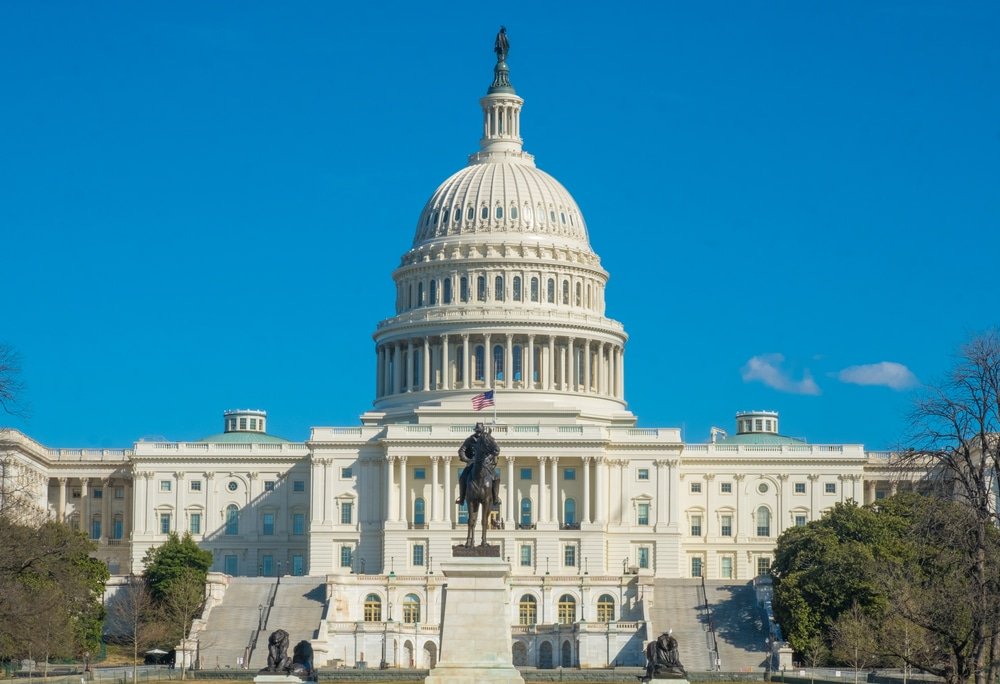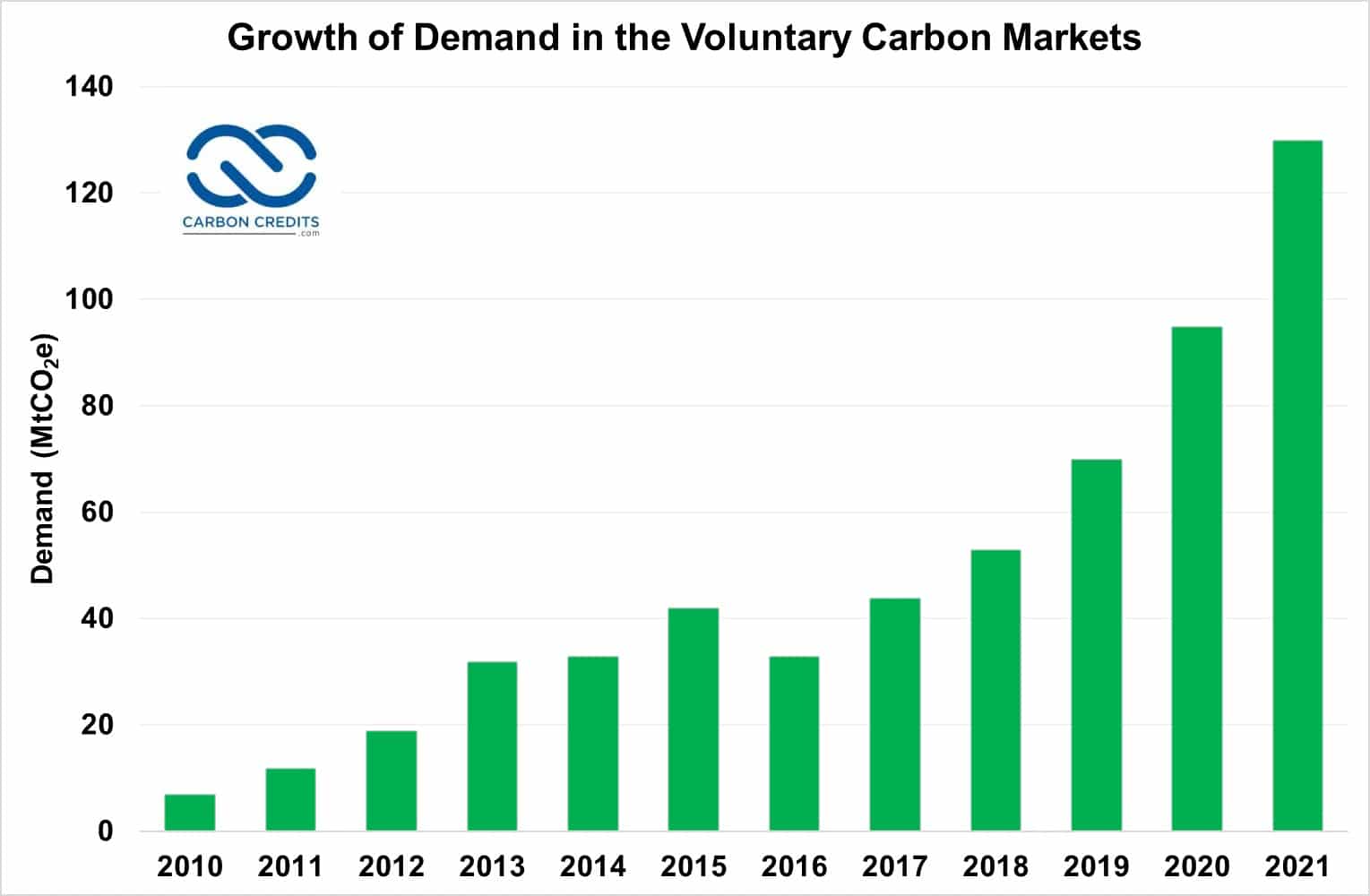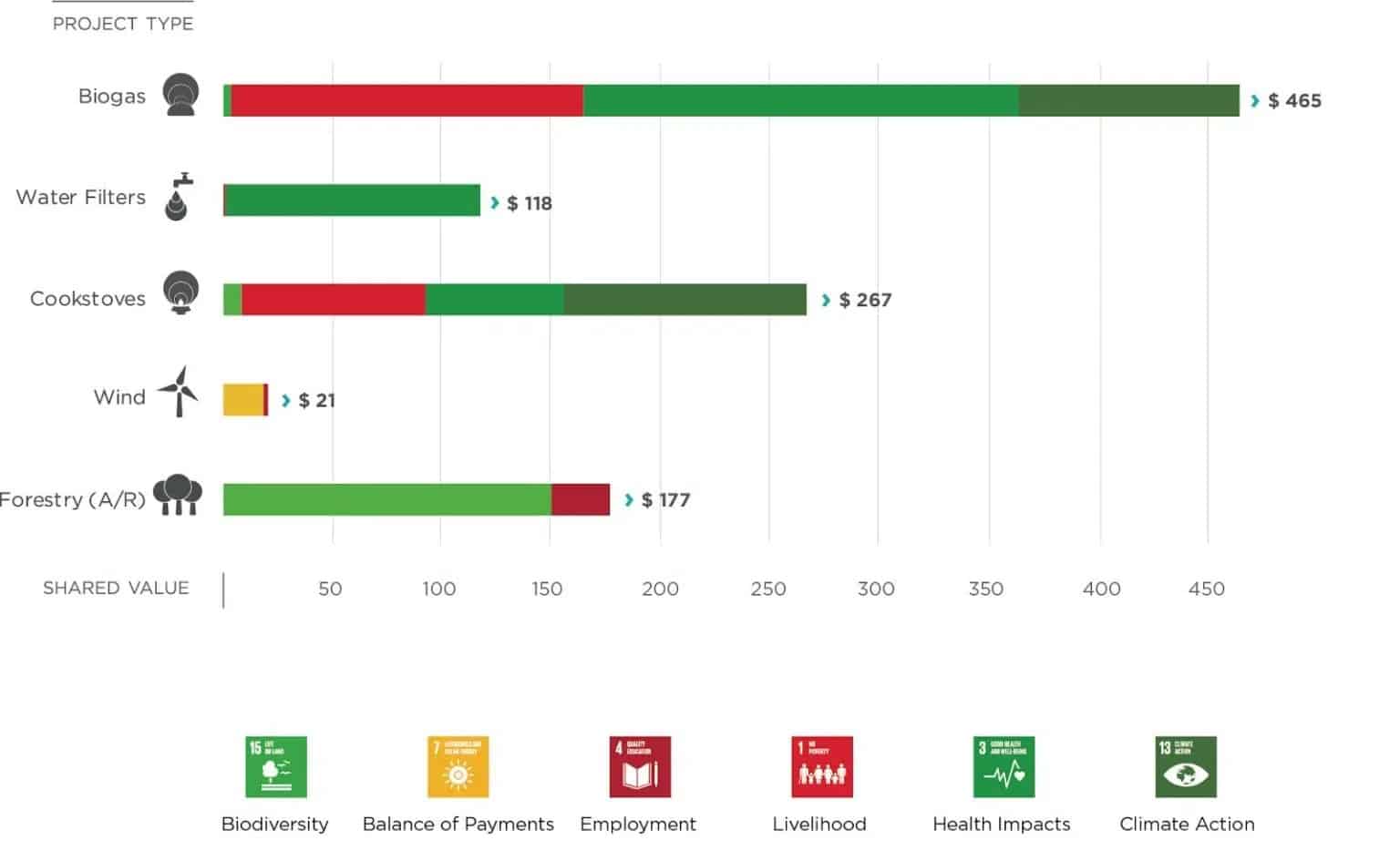To limit global warming in line with the Paris Agreement, the world has to cut greenhouse gas emissions by 50% by 2030 and bring them to net zero by 2050.
But that’s easier said than done because there are many human activities that can’t be done without using carbon. So how should we go about those things that continue to contribute to climate change? One way is through carbon credits, with more push from the governments.
Companies can neutralize their carbon footprint by paying someone else to reduce their emissions or capture them. And in the most lofty situations, entities can use carbon credits to achieve their climate goals.
What are Carbon Credits and How Can They be a Climate Action?
The idea behind the creation of carbon credits is very simple. If an entity can’t avoid releasing CO2, it can ask another to emit less so that the total level of CO2 in the atmosphere is cut even if the first emitter continues on producing CO2.
Carbon credits, also known as carbon allowances, are like permission slips for carbon emissions. When an entity buys a carbon credit, it gets the permission to emit one ton of CO2.
It is traded in two different markets – compliance and voluntary. Under the compliance carbon market, companies are obliged to follow the allowed emission level they’re given. Usually, a company buys the credits from the government regulated body.
The number of credits every year is based on the emissions limit (cap) the government set. If the regulated company goes above those limits, it can buy from another company. On the contrary, if that firm has excess credits, it can sell to its peers (trade).
Hence, these programs that trade carbon credits are also known as “cap-and-trade”. The cap that regulators set decreases over time, prompting carbon-intensive industries to reduce their emissions.
Under the voluntary carbon market (VCM), carbon credits are also called carbon offsets. The credits are traded in various carbon exchanges and online marketplaces without being regulated by the government. Entities buy or trade them voluntarily to offset their carbon footprint.
So, in a sense, governments have a direct influence on CO2 emissions levels under the compliance carbon markets.
Right now, several countries have included in their government policies the element of carbon allowances. The big ones are the EU Emissions Trading System (ETS), the California Global Warming Solutions Act (USA), and the China Certified Emissions Reduction (CCER) scheme.
These government carbon schemes particularly focus on regulating emissions from the heavy emitters such as steel, cement, and transportation. Through carbon credit schemes, companies operating in regulated industries don’t have a choice but to lower their footprint.
Unless they’re willing to just pay the hefty fines and be left behind by their peers keeping pace with the clean renewable energy trend.
So, carbon credits serve an instrumental role in not just regulating emissions, but also as a climate mitigation. Governments, thus, have a critical role in taking advantage of carbon credits and turning them into a climate action.
In the Absence of a Government Policy
Even without the mandate, companies can still set climate goals and achieve them by buying carbon credits or supporting the projects that generate them.
Companies can pick from the different types of carbon credits available on emissions trading platforms.
Three Types of Carbon Credits
- Credits from reduced emissions, e.g. energy efficient technologies
- Credits from removed emissions, e.g. tree planting and carbon capture tech
- Credits from avoided emissions, e.g. not cutting down trees
Though the process of creating carbon credits differ, each credit represents the same amount of reduction: one tonne of CO2.
Encouragement from both the government and investors to cut down emissions continues to intensify as the deadline for the world to reach net zero emissions is fast approaching.
The fastest action we can take to prevent catastrophic effects of climate change is by the end of this decade. Only if we cut global CO2 levels by half that period will we hit net zero the soonest.
- Estimates say that 2 billion tonnes of CO2 reduction/avoidance, or the same amount of carbon credits, is necessary to get to the 2030 goal.
Some businesses offset their current emissions that they can’t avoid, but others have pledged to go further and use carbon credits to compensate for their historic emissions.
Take for instance the case of Microsoft. The tech giant seeks to offset its huge footprint from over 4 decades back. And they’re not compelled to do so; it’s voluntary and part of the company’s corporate sustainability efforts.
Most shareholders are shaping how businesses handle their corporate social responsibility, which now primarily concerns sustainability and climate change actions.
Building Transparency, Boosting Corporate Sustainability
Until now, voluntary emissions trading systems don’t have a standardized way in trading carbon credits. In other words, project developers and traders can go in their own way on how to transact business.
This causes some projects to be developed in a manner that creates questionable credits. Environmentalists accuse some projects that don’t deliver their promised carbon reductions. They also claim that some countries have increased their emissions just to be paid for slashing them.
A landmark decision was made by President Biden’s climate envoy during the COP27 climate conference by creating a framework for carbon credits. The framework associates the cash from the credits to putting an end to developing countries’ reliance on fossil fuel.
The plan particularly focuses on reducing governments emissions from power generation and replacing fossil fuels with renewable sources of energy. The scheme specifies independent, 3rd-party verification of emission reductions.
Meanwhile, the voluntary carbon credit market has shown an impressive growth since 2010. The chart plots this growth of the VCM.
That rising trend is despite the lack of standardization and transparency in the VCM. But as the world races to net zero, carbon offsets would be here to stay.
To build credibility and trust in the market, guidelines and principles are in place to encourage more transparent carbon trading markets. The Integrity Council for the VCM just recently published its Core Carbon Principles.
CCPs will set a global standard for high-integrity carbon credits based on clear and verifiable data. Credits that have a CCP label will be recognized as high-quality.
Encouragement to support high-quality credits is not just for the big polluters but for all actors across the value chain.
Essentially, supporting credits with high transparency also translates to boosting reputation on corporate sustainability and climate actions. If companies choose to take this path, the growth of the carbon markets may even beat industry projections.
Pricing Carbon Credits and Sustainable Development
Pricing carbon offsets or carbon credits often follows a free-market approach to putting a cost on emissions. But pricing carbon credits based on market dynamics alone may not be enough.
That’s because paying for carbon credits at prices below what they cost to sustain a project means that those projects may stop running in communities they support. It may also not consider the additional value that a project delivers in terms of sustainable development.
Taking into account the socio-economic benefits, a.k.a. co-benefits delivered by a project in pricing carbon credits is important. Let’s give an example to show this is so.
For instance, prices for community-based clean cookstoves projects are higher than large-scale renewable energy projects. That could be because the former often deliver health benefits to women and children.
So, some carbon standards factor in the co-benefits that a project delivers that go beyond carbon reduction. They are reflected in the final price of carbon credits.
Co-benefits also refer to the United Nations 17 Sustainable Development Goals, which are adopted by the national governments that are Parties to the 2015 Paris Agreement.
They are often identified under the three pillars of sustainability — social, environmental, and economic.
- In the context of climate change, co-benefits are the additional positive social, environmental, and economic benefits of climate mitigation projects that are above and beyond the key benefit of reducing emissions.
Climate change mitigation and co-benefits can go hand in hand if considered from the early stages of the project. Careful integration of co-benefits into a project’s blueprint can ensure their delivery. Examples of co-benefits include:
- improved air, water, or soil quality;
- employment generation;
- improved livelihoods;
- improved energy security and access to energy services;
- infrastructure development; and
- technology transfer.
The Gold Standard is famous for quantifying the beyond-carbon impacts of a project and reflecting them in the final price of carbon credits.
Here’s an example where various project types have different shared values based on the bundled SDGs they deliver.
The creation of the UN SDGs provides important momentum for integrating sustainable development into climate change mitigation agreements. As seen in the example above, projects that bundle sustainable development goals can maximize co-benefits. This, in turn, may also push carbon credit prices up.
To know more about pricing carbon credits, here’s a comprehensive guide for that.
Each SDG has its own set of targets to achieve. And though SDG 13 is specifically for tackling climate change, other SDGs also generate different types of carbon credits.
For instance, projects that speed up the clean energy transition (SDG 7) can produce renewable energy credits. This type of carbon credit is from replacing fossil fuels by renewables such as hydro, solar, and wind, and government subsidies for them are growing.
There’s also the agricultural or soil carbon credits that sustainable agriculture (SDG 2) projects can earn. Regenerative farming practices often yield high credit prices.
SDG 15 or sustainably managing forests and other terrestrial ecosystems yield nature-based removal credits. REDD+ or forestry and land use projects are a most common example.
Both the corporate world and the governments are pressing harder to make these projects deliver on their carbon reduction promise.
Europe’s most energy-intensive industries such as aviation can use carbon credits to meet their mandatory emissions limits under the EU Emissions Trading Scheme.
In Colombia, polluters can also pay for their carbon taxes with carbon credits. And in the U.S., the government established new rules that require entities who claim for carbon capture tax credits to verify the carbon captured by the projects or initiatives they support.




